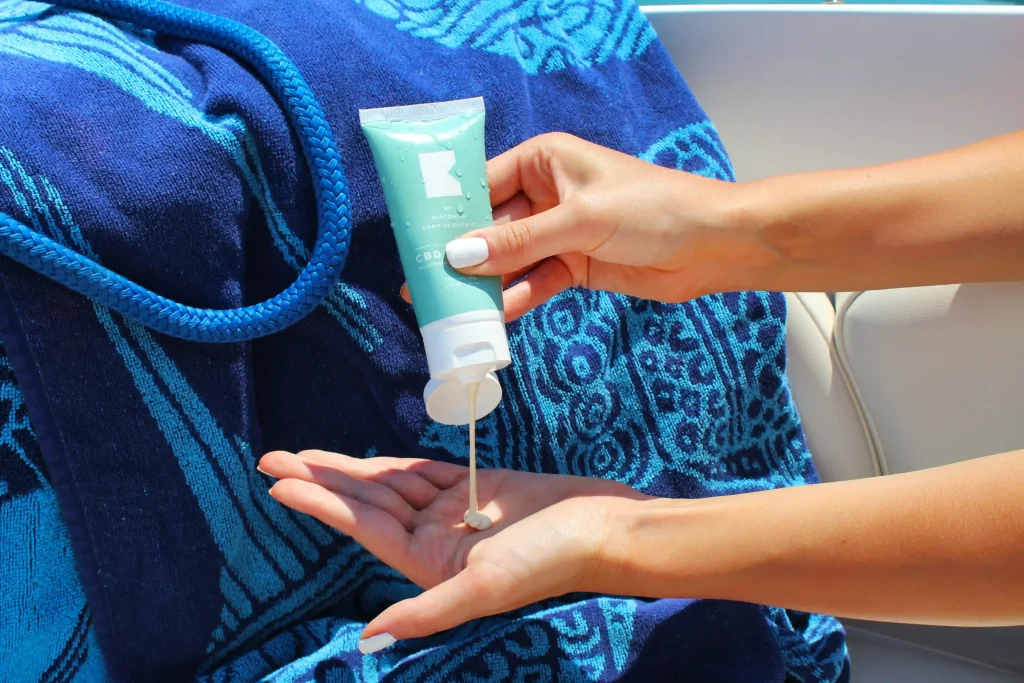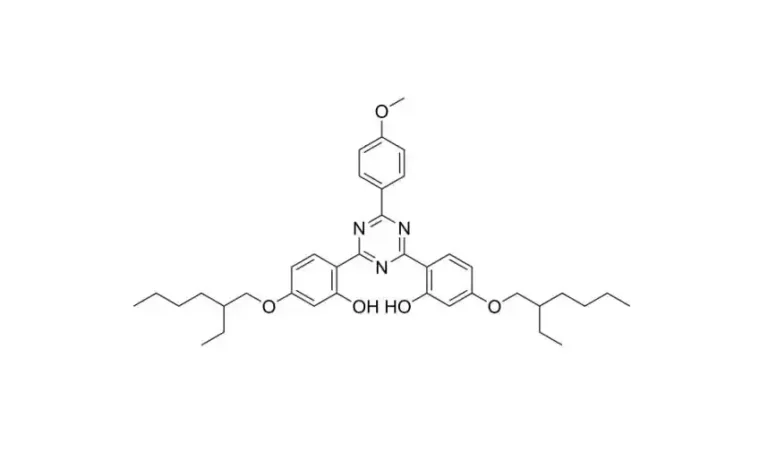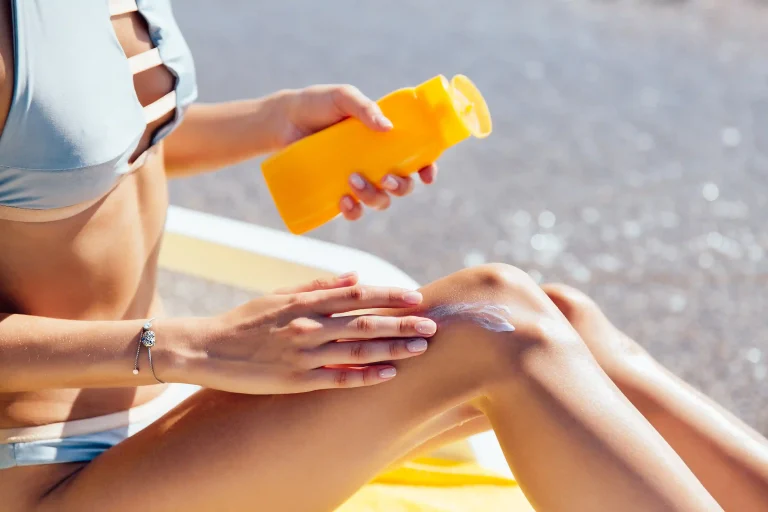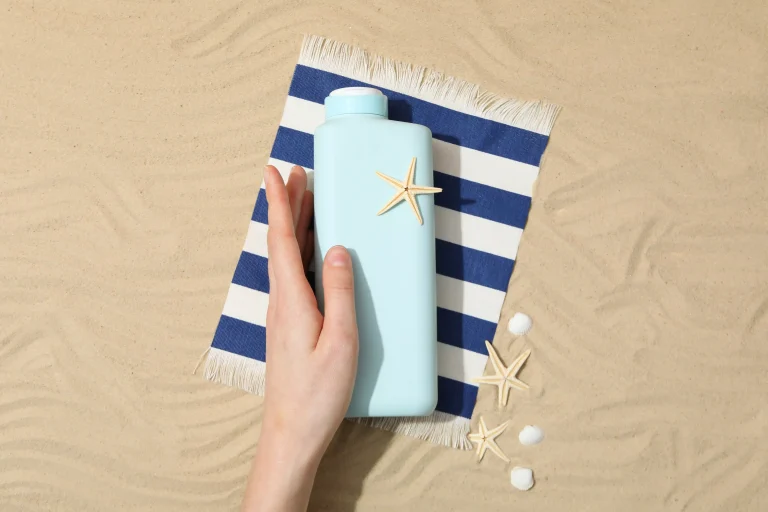
As we enter 2025, safeguarding skin from the sun continues to be a crucial focus for skincare lovers and wellness-minded people alike. Awareness of UV harm is growing. Its lasting consequences—such as early wrinkles and skin cancer—are becoming more evident. This has sparked a lively discussion about powdered zinc oxide as sunscreen versus conventional chemical sunscreens. Both pledge to guard your skin against damaging rays. Yet, which one excels in effectiveness, safety, and comfort? In this detailed guide, we’ll explore the science, advantages, and practical factors thoroughly. Our goal? To assist you in choosing the ideal option for your skin this year.
Sunscreen Basics
Sunscreens serve as your primary shield against ultraviolet (UV) radiation. This includes UVA (wrinkle-causing rays) and UVB (burn-causing rays). Broad-spectrum sunscreens defend against both types. However, their methods differ depending on the formula. Let’s simplify it:
- Traditional Sunscreens: These are usually chemical-based. They depend on components like oxybenzone, avobenzone, or octinoxate. Their job? They soak up UV rays, transform them into warmth, and release that heat from your skin.
- Powdered Zinc Oxide as Sunscreen: This is a mineral-based choice. Powdered zinc oxide bounces and disperses UV rays, forming a solid barrier on your skin’s surface. People often call it a “physical” or “mineral” sunscreen.
In 2025, preferences are shifting noticeably. Consumers now favor safer, more natural elements. As a result, powdered zinc oxide is rising in popularity. But does it surpass its chemical rivals? Let’s investigate.
The Science Behind Powdered Zinc Oxide
How Does Powdered Zinc Oxide Function?
Powdered zinc oxide comes from a natural mineral called zincite. When turned into a fine dust, it becomes a powerful UV blocker. Unlike chemical sunscreens that seep into your skin, powdered zinc oxide rests on top. It acts like a protective screen. This bouncing action delivers instant coverage. You don’t need to wait 15-20 minutes for it to “kick in,” as you do with chemical blends.
In 2025, improvements in recipes have polished powdered zinc oxide significantly. The thick, pale layer it once left behind is fading away. Non-nano particles (bigger than 100 nanometers) ensure it stays on the surface, not sinking in. This makes it a wiser pick for both your health and the planet.

Broad-Spectrum Coverage
Powdered zinc oxide boasts a remarkable trait. It blocks UVA and UVB rays reliably. Research proves it offers steady protection across the UV range. Some chemical blockers, though, weaken under sunlight (a process called photodegradation). In contrast, powdered zinc oxide’s durability provides lasting defense. This matters greatly as we enjoy more outdoor time in 2025’s brighter weather.
Traditional Sunscreens: Strengths and Weaknesses
The Charm of Chemical Sunscreens
Traditional sunscreens have ruled the market for years. Why? They’re light and simple to apply. In 2025, companies keep enhancing them. They now offer strong SPF choices that merge smoothly into your skin without stickiness. If looks matter to you, chemical sunscreens often triumph with their clear finish.
The Drawbacks of Chemical Blockers
Still, worries about chemical sunscreens linger. Ingredients like oxybenzone are tied to hormone issues and nature’s harm, especially to coral reefs. Plus, some folks feel itchiness or allergic responses. This is particularly true for those with delicate skin. Another hitch? Photodegradation. After long sun exposure, these blockers can lose their power. That leaves your skin exposed.
Powdered Zinc Oxide vs. Traditional Sunscreens: A Head-to-Head Comparison
To aid your decision, let’s weigh these two choices across vital aspects:
| Criteria | Powdered Zinc Oxide | Traditional Sunscreens |
| Mechanism | Bounces UV rays | Soaks up UV rays |
| Application | Instant coverage | Needs 15-20 min to soak in |
| Skin Safety | Gentle, great for sensitive skin | May cause itchiness or allergies |
| Environmental Impact | Reef-friendly (non-nano) | Could damage sea life |
| Stability | Stays strong, endures long | Weakens under sunlight |
| Finish | Might leave a faint pale tint (better in 2025) | Clear, featherlight |
Which Triumphs for Delicate Skin?
If your skin is sensitive or prone to pimples, powdered zinc oxide as sunscreen stands out. It has calming qualities that ease redness. Plus, it won’t clog pores—a perk chemical options sometimes lack, as they can worsen breakouts.
Eco-Friendly Thoughts in 2025
Eco-awareness is soaring now. Here, powdered zinc oxide excels. Non-nano blends, like those in zinc oxide sunscreen powders, spare ocean life. This fits perfectly with 2025’s drive for greener skincare.
Why Powdered Zinc Oxide is Gaining Ground in 2025
Advances in Recipes
In 2025, powdered zinc oxide has shed its old, thick image. Products like BFP Z40S powdered zinc oxide and BFP Z40SM powdered zinc oxide feel smooth and light. They rival chemical sunscreens in ease. These upgrades make it handy for daily wear or outdoor fun.
Rising Call for Safety
Since the pandemic, people care more about health and wellness. This has boosted the desire for pure, safe ingredients. Powdered zinc oxide matches this shift flawlessly. It gives wide-ranging protection without the dangers of chemical soaking.
BFP: Your Trusted Powdered Zinc Oxide Supplier
When seeking top-notch powdered zinc oxide as sunscreen, BFP shines as a dependable ally. Located in India, BFP focuses on mineral UV blockers. They craft creative zinc oxide solutions for the sunscreen world. Quality and eco-friendliness guide them. Their items suit today’s users and makers well. Check out BFP to see their range. You’ll understand why they lead this field.
FAQs About Powdered Zinc Oxide as Sunscreen
1. Is powdered zinc oxide as sunscreen safe for everyday use?
Yes, experts widely view powdered zinc oxide as safe for daily wear. It doesn’t sink in, reducing absorption risks. Plus, it’s mild enough for all skin kinds, even tender ones.
2. Does powdered zinc oxide leave a pale mark?
Older versions did, for sure. But 2025’s newer mixes have cut this down a lot. Non-nano bits still add a slight hue. Yet, it’s barely there and blends nicely with most tones.
3. How does powdered zinc oxide stack up against titanium dioxide?
Both are mineral UV shields. However, powdered zinc oxide gives wider UVA defense. Titanium dioxide shines against UVB rays. Mixing them can boost total coverage.
4. Can powdered zinc oxide as sunscreen guard against blue light?
It mainly tackles UV rays. Still, some blends with added iron oxides offer slight defense against high-energy visible (HEV) light—like blue glow from screens.
So, Which Prevails in 2025?
The answer hinges on what you value most. Love safety, green vibes, and quick protection? Then powdered zinc oxide as sunscreen wins in 2025. Its strength, skin-kind nature, and eco-perks make it a smart pick. But if you crave a featherlight, unseen layer and don’t mind reapplying, traditional sunscreens still charm.
In the end, your skin type, daily habits, and beliefs will steer you. Want more on zinc oxide choices? Explore BFP’s lineup of zinc oxide sunscreen powders for the perfect match.
Take Charge for Healthier Skin
Ready to boost your sun defense in 2025? Dive into powdered zinc oxide’s perks. See how it can refresh your skincare habits. Head to www.shbfpl.com now. Discover standout products like BFP Z40S. Make a wise choice for your skin and the earth. Don’t delay—shield yourself with nature’s finest!











